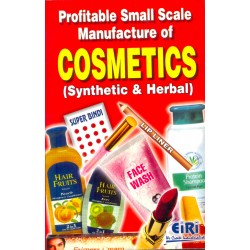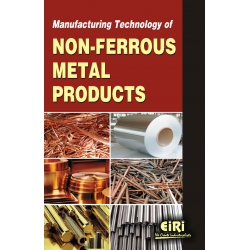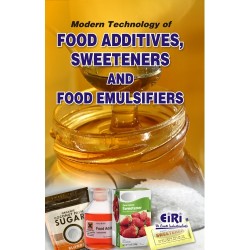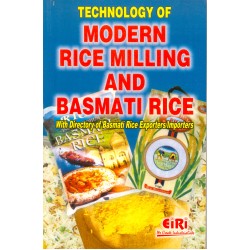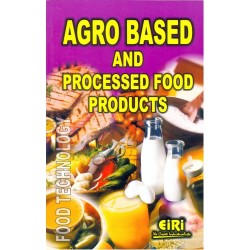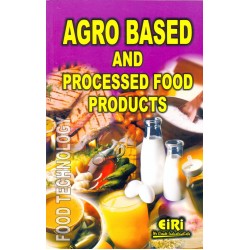Starch and Allied Products Manufacturing Technology
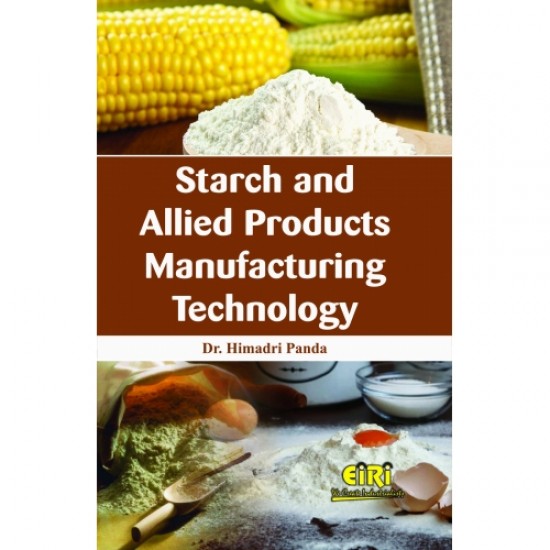
- More than 40 years of experience
- Managed by expert industrial consultants
- ISO 9001-2015 Certified
- Registered under MSME, UAM No: DL01E0012000
- 24/5 Research Support
Get your quesries resolved from an industry expert. Ask your queries before report or book purchase. - Custom Research Service
Speak to the our consultant to design an exclusive study to serve your research needs. - Quality Assurance
All reports are prepared by highly qualified consultants & verified by a panel of experts. - Information Security
Your personal & confidential information is safe & secure.
The book contains chapters on Starch (Composition, Production, Modification and Starch Soup), Starch Structure, Manufacture of Starch from Maize (Structure, Composition and Quality), Manufacture of Acetylated Corn Starches, Activated Carbon from Corn Starch for Treating Dye Waste Water, Potato Starch Manufacture (Grinding, Juice Extraction and Fiber Extraction), Thickening Agent Based on Tamarind Seed Gum, Manufacture of Wheat Starch Technology, Sweet Potato Starch Extraction and its Properties, Starch from Sweet Potato Production Technology, Cassava and Tapioca Starch Manufacturing Technology, Development of a Cassava Starch Extraction Machine, Modification of Cassava Starch for Industrial Uses, Characterization of Chestnut (Castanea sativa, Mill) Starch for Industrial Utilization, Flours and Starches from Improved Bean (Phaseolus vulgaris L.) Varieties, Rice Starch Production Technology, Preparation of Rice Starch, Rye Starch Manufacturing Technology, Oat Starch (Isolation, Modification, Chemical Composition, Applications and Properties), Barley Starch (Composition, Gelatinization, Acid Hydrolysis, Production and Uses), Chemical Modifications of Barley Starch, Starch from Ginger (Zingiber officinale) and Maize (Zea mays), Mung Bean Starch Manufacture, Tacca Starch, Project Profile on Carboxy Methyl Starch, Project Profile on Dextrin from Starch, Project Profile on Maize and its Bye-products, and Project Profile on Oxidized Starch.
- The reaction formula of starch
- Microscopic pictures of starch granules according to AVEBE Stadex
- Swelling and dispersion of starch granules during gelatinization according to AVEBE Stable food starches
- Composition of Starch
- Production of starch
- Modification of Starch
- Schematic Figure of wet milling process
- Chemical modification
- Acetylation
- The mecanism of replacing hydroxylogroups according to the Modification and Chemical Characterization of Barley Starch
- Hydroxypropyl
- Acid/alkaline treatment
- Oxidation
- Stabilization
- Cross linking modification
- Physical and enzymatic modification
- Processing the soup at Tetra Recart
- Starches from suppliers
- Experiment
- Starch samples from suppliers
- Summary table of the starch samples with their modification specifications
- Viscosity-with and without applied shear rate
- The Bostwick instrument measures the rate of the flow
- Bostwick
- pH 15
- Microscopy
- Sensory test
- Production of the starch soup
- The production procedure of starch soup
- The recipe of the basic starch soup
- Preparation of the soup
- Carbohydrate Chemistry
- Open chain and pyranose ring structures of the hexose sugar D-glucose. The ring form is referred to as D-glucopyranose
- Starch Polymer Biosynthesis
- 1.4 and a-1.6 glycosidic bonds of starch
- Properties of Amylose and Amylopectin
- Characteristics of Amylose and Amylopectin
- Amylose
- 1.4 linkages of amylose
- Amylose models Amyloe can be depicted as either a straight chain or a helix
- Starch Lipid inclusion complex An amylose helix is complexed with the fatty acid chain of a monoglyceride
- Amylopectin
- Representation of a portion of an amylopectin molecule and enlargement of typical packed clusters Individual chains are helical, and pairs of chains are double helical
- Approximate Amylose and Amylopectin Content of Common Food Starches
- Starch Granules
- Inteneral structure of the starch granule
- Approximate Size and Shape of Common Food Starch Granules
- Minor constituents of the starch granule
- Cross section of a sorghum kernel treated with a amylase. Note the concentric rings in the broken starch granules
- Model of the structure of amylopectin in starch granules
- Proteins
- Approximate Lipid and Protein Content of Common Food Starchese
- Lipids
- Ash
- Structure, Composition and Quality of Grain
- Structure
- Corn
- Longtudinal Bisection of a steeped dent corn kernel
- Weight and composition of component parts of dent corn kernels from eleven Midwest hybrids
- Section of steeped corn homy endoperm
- Composition
- Corn
- Proximate analysis of corn grain
- Grain Quality
- Corn
- Grading standard for corn
- Wet milling
- Grain Cleaning
- Flow diagram of the corn starch manufacturing process
- steeping
- Principles
- Mechanics of Commercial Steeping
- Detail of equipment arrangement and water and process stream flow employing the highdensity four stage separation centrifugation system
- Sequencing of continuous countercurrent steeping
- Details of countercurrent continuous advance steep battery operation
- Design of tank for continuous steeping
- Water Absorption and Solubles Removal
- Effect of Sulfur Dioxide
- Corn endosperm proteins extracted with different solvents
- Role of Lactic Acid Bactena
- Milling and Fraction Separation
- Component Yields
- Wet milling yieldsa of different corn phenotypes Germ Separation
- Diagram of a Bauer attrition mill. Contiguration shown is used for fine milling degerminated residue With wider spacing of interiocking teeth and no impact ring it is used for degermination (firstbreak) milling
- Cutaway diagram of a hydrocyclone separator
- Battery of hydroclones used for separation of germ from milled steeped corn
- Second Milling and Fiber Separation
- Cutaway diagram of an Entoleter mill used for fine milling degerminated residue
- DSM fiber washing unit employing weidge bar screening surface
- Detail of wedge bar screening surface and simulation of the unique slicing action of this screen
- Starch Gluten Separation
- Cutaway diagram of a Merco starch separation centrifuge
- Removable metal (RC model) hydroclone starch washing separation modules individual 10 cm hydroclone tubes appear as spokes in the circular modules
- Starch Processing
- Product Drying, Energy use and pollution Control
- Automation
- The Products
- Starch
- Sweeteners
- Ethanol
- Analysis and properties of powdered corn and sorghum starches
- Properties of commercial corn syrups
- Corn Oil
- Feed Products
- Experimental Procedure
- Materials
- Preparation of Acetylated Starch
- Determination of Acetyl Content and DS
- Characterization of Starches
- Results and discussion
- Acetyl Content (%) and Degree of Substitution (DS)
- Theacetyl content and DS of acetytated com starches obtained from different treatments
- Starch Granule Morphology
- Swelling Power and Solubility
- Scanning electron micrographs of native and acetytated corn starches
- Swelling power and solubility of native and acetylated corn starches obtained from different treatments
- Paste Clarity
- Effect of storage time on light transmittance (%) of starch pastes
- Syneresis and freezethawstability study of native and acetylated corn starches
- Syneresis and Freeze thaw Stability
- Materials and Methods
- Raw materials
- Methods
- Physical characterization
- Results and Discussion
- FTIR analysis
- Effect of concentration of Zinc Chloride solution used for producing activated carbons
- Effect of time of impregnation on corn starch
- Effect of activation temperature on activated carbon
- Effect of activation time on activated carbon products
- Effect of ph
- Structure and Chemical Composition of the Potato
- Formation and Morphology of the Tuber
- Anatomy of the Tuber
- Longitudinal diagram of a potato tuber
- Outer cell layers of a potato
- Chemical Composition
- Cells with starch
- Composition of Potato
- Differences Between Commercial Starches
- New Development. The All amylopectin Potato
- Differences between commercial starches
- Brabender ViscoAmylograph curves for potato starch (with 20 (PS) and 10 (AS 10%) percent amylose) amylopectin potato starch (AS 0%) and waxy maize/corm starch
- Potato Starch Processing
- Composition of Potatoes
- Three methods of potato processing
- Evaluation of three starch processes
- A schematic overview of a potato starch process
- Grinding
- Potato Juice Extraction
- Rasp used for shredding potatoes
- Continuous, decanter type centrifuge
- Particle size (diameter) of ground potatoes
- Fiber Extraction
- Conical centrifugal sieves
- Schematic illustration of the structure of tamarind seed gum
- Materials
- Preparation of tamarind kernel powder
- Determination of chemical composition
- Preparation of thickening agent
- Preparation of printing pastes
- Printing procedure
- Evaluation of colour strength and fastness properties
- Results and discussion
- Characterization of tamarind kernel powder
- Chemical compositions of tamarind kernel powder from different places
- Effect of disperse printing on colour value
- Colour value of printed polyester fabric using different areas of tamarind seeds
- Comparison of printed polyester fabric using different areas of tamarind seeds
- Effect of printing on fastness properties
- Colour fastness to washing at 40oC (ISO 105-CO6 ATS 1994)
- Colour Fastness to rubbing (ISO 105-x12 2001)
- The Martin Process
- The batter process
- Granular and molecular structure of wheat starch
- Granular structure
- Molecular structures of the major wheat starch components
- Haworth representations of amylose and amylopectin
- Helical conformation of amylose, a left handed helix containing six anhydroglucose units per turn
- Functionally of wheat starch granules, films and pastes
- Granules
- Films
- Pastes
- Improving and chemically moditying wheat starch for use in the food industry
- Improving the functionality of wheat starch
- syneresis of starch gel exemplified by release of water from hydrogen bonded amylose gel
- Effect of molecular differences in starch components
- Pregelatinised starch
- Chemical modification of starch
- Thin boiling starch
- Dextrins
- Starch ethers
- Reaction of starch with ethylene oxide (top) and ethylene chlorohydrins (bottom) to produce hydroxyethylated starch
- Starch esters
- Reaction of starch with phosphorus oxychloride showing the formation of a starch phosphate and a distarch phosphate
- Reaction of starch with sodium trimetaphosphate (STMP) showing the formation of a monostarch phosphate and distarch phosphate
- Starch acetates
- Reaction of starch with acetic anhydride to form starch acetate and structure of a mixed acetate adipate starch
- Starch adipates and succinates
- Wheat starch syrups
- Reaction of starch with succinic anhydride to form a distarch succinate-the normal product-and some monostarch succinate an acidic by product
- syrups from acidic hydrolysis
- Composition of acid converted corn starch hydrolyzates as determinedby chromatographic analysis
- Starch Extraction
- Functional properties of enzymatically separated sweet potato starch
- Pasting Properties of enzymatically separated sweet potato starch
- Multipurpose mobile starch extraction plant for sweet potato starch extraction
- Biochemical Constituents
- Proximate composition of isolated starch
- Size and shape
- Physical characteristics of sweet potato starch
- Crystalline structure
- Physico chemical properties of sweet potato starches
- Molecular weight
- Amylose content
- Physicochemical properties of starches from some selected sweet potato lines
- Swelling and solubility
- Water binding capacity
- Digestibility
- Degracdation by acid
- Degradation by enzymes
- Retrogradation
- Materials
- Methods
- pH
- Moisture Content
- True density
- Bulk density
- Tapped density
- Average diameter and size distribution of starch powders
- Powder flow properties
- Angle of repose
- Hsusner's ratio
- Carr's compressibility index
- Evaluation of binder quality
- Tablet formulations for evaluation of the binder quality of the starches
- Bulk and tapped density of paracetamol granules
- Tablet hardness
- Tablet friability
- Evaluation of disintegrant quality
- Tablet formulations for evaluation of the disintegrant quality of the starches
- Disintegration time
- Evaluation of diluent quality
- Influence of the starches as binder and disintegrant on in-vitro drug dissolution
- calibration of UV spectrophotometer
- Formulations for the evaluation of the starches binder quality
- Formulations for the evaluation of the starches disintegrant quality
- Dissolution test
- Statistical analysis
- Introduction
- Cassava wet starch processing
- Cassava root
- Peeling and Washing
- Rasping
- Extraction
- Sedimentation
- Packaging
- Starch from Tapoic Starch
- Cassava roots with conical, conical cylindrical, cylindrical and fusiform shapes (b) crossection of cassava roots and (c) drawing of root cross section containing different comonents
- Processing
- A beam balance or Rieman balance for determining cassava root starch content by specific gravity analysis
- Basic process for isolating a high quality tapioca/cassava starch. The numbers in parentheses
- Machinery of tapioca starch processing
- General specification of native cassava starch
- Tapioca Starch
- Changes in granular structure of cassava starch extracted from roots
- Modification
- Design Machine Features
- The Hopper
- Mixing Unit
- Extraction Chamber
- Pictonal view of cassava starch extraction machine
- Discharge units
- Frame
- Power Unit
- Operational Principle of the Machine
- Design Analysis
- Feeding Chute
- Stirrers/Mixing Unit
- Screw Conveyor
- Power requirement
- Shaft Selection
- Machine Production Cost
- Test Procedure
- Exploded View of the Machine
- Performance Evaluation of the Machine
- Flow chart for the preparation of modified cassava starch
- Cassava Starch Preparation
- Preparation of Modified Cassava Starches
- Preparation of Modified Starch with Ammounium Phosphate
- Preparation of Modified Starch with Sodium Acetate
- Preparation of Modified Starch with Sodium Acetate and Fumaric Acid
- Preparation of Modified Starch with Sodium Acetate
- Preparation of Modified Starch with Sodium Acetate and Fumaric Acid
- Preparation of Modified Starch with Sodium Acetate and Adipic Acid
- Chemical Analysis
- Determination of Ash Content
- Determination of pH
- Determination of Gelatinization Temperature
- Determination of Moisture Content
- Determination of Swelling Volume Sweelling Powder and Solubility
- Determination of Viscosity
- Material and methods
- Chestnuts
- Chestnut Flour
- Chestnut Starch
- Starch natural fermentation
- Starch chemical characterization
- Amylose and amylopectin contents
- Granules microscopy
- Granule susceptibility to dimethyisulfoxide (DMSO)
- Swelling power and solubility
- Chestnut starch pastes
- Paste clarity
- Paste elasticity
- Gel strength
- Viscographic analysis
- Freeze thaw cycles
- Paste enzymatic susceptibility
- Sources of Beans and Sample Preparation
- Starch Extraction
- Physico chemical Properties of Bean Flours and Starch Extracts
- Colour and pH Value Measurement
- General scheme employed for the extraction of starch from haricot bean
- Chemical Composition Assessment
- Pasting Profiles
- Swelling Power and Solubility Pattern
- Water and Oil Absorption Capacity
- Statistical Analysis
- Constituents of rice starch
- Minor constituents
- Structure and functionslity of rice starch
- Granule shape and size
- Scanning electron micrographs (SEM) of rice starch
- Starch crystallinity Amylose
- Cluster structure showing linear chains of amylopectin the C chain has the only free reducing group in the molecule
- Amylopectin
- Swelling power and solubility
- Gelatinization and the structure of rice starch
- Gelatinization pasting properties
- Gelatinization rheological properties
- Improving rice starch functionality for food processing applications
- Chemical modification of rice starch
- Acid thinned rice starch
- Acetylated rice starch
- Octenyl succinic anhydride modified starch
- Hydroxypropylated rice starch
- Cross linked rice starch
- Physical modification of rice starch
- Hydrothermal treatment
- Extrusion
- Sonication
- Gamma irradiation
- Genetic modification of rice starch
- Traditional Method
- Mechanical Method
- Properties of Rice Starch
- General Properties Unique to Rice Starch
- Pasting Properties
- Factors Affecting Rice Starch Properties
- Rice Variety Common Versus Waxy
- Ranges of physic chemical properties of common and Waxy starch
- Protein Content
- Method of Preparation
- Modification
- Rice Starch Applications
- Rice starch Applications
- Isolation
- Industrial
- Laboratory
- Pilot plant process for isolation of rye starch
- Modification
- Laboratory process for
- isolation of rye starch
- Applications
- Properties
- Microscopy
- Composition
- Composition of laboratory isolated rye starch
- X-Ray Diffraction Patterns
- Gelatinization Behavior
- Retrogradation
- Amylose Lipid Complex
- Swelling Power and Amylose Leaching
- Swelling power and solutibility determined for rye starch
- Isolation
- Industrial
- Laboratory
- Modification
- Isolation of oat starch using sodium hydroxide at low shear rate
- Isolationof oat starch using protease
- Applications
- Properties of Oat Starch
- Microscopy
- Chemical Composition
- Proximate Composition of native oat starches
- Characterization of amylose amylopectin and intermediate material in three oat starches
- X-Ray Diffraction
- Gelatinzation
- DSC parameters for gelatinization of oat starch in excess water
- DSC parameters for the transition of the amylose lipd
- Complex of oat starch in excess water
- Swelling Power and Amylose Leaching
- Swelling power and solubility of oat starches
- Barley Grain Structure and Composition
- A iongitudinal section of a barley grain
- Barley Starch
- Isolation and Purification
- Average chemical composition of hulled & hullless barley grains
- Chemical Composition of Barley Starch
- Carbohydrate Component
- Scanning election micrographs of normal (CDC Dawn, Phoenix SR 93102, and SB 94860), waxy (CDC Alamo , CDC Candie, SB 94912, and SB 94917) and high amylose (SB 94893 and SB 94897)barley starches
- Non-carbohydrate components
- Granule Morphology
- X-Ray Diffraction and Relative Crystallinity
- Gelatinization
- Acid Hydrolysis
- Transmission electron microscopy of (a) waxy (b) normal and (c) highamylose barley starch granules
- X-ray diffraction patterns and relative crystallinities of normal, waxy and high amylose starches
- Production and Uses of Barley Starch
- Extent of amylose leaching (AML) in normal waxy & high amylose barley starches at 90oC
- Scanning electron micrographs of waxy normal and high amylose barley starches, hydrolyzed by PPA at 37oC for 1 hour
- Chemical reaction during the acetylation
- Materials and methods
- Gelatinization Properties
- Swelling and Solubility Properties
- Pasting Properties
- Materials and Methods
- Preparation of Reagent Used
- Isolation and Purification of Starch from Maize (Zea mays)
- Isolation and Purification of Starch from Ginger (Zingiber officinale)
- Determination of Swelling Power
- Determination of Solubility Power
- Gelatinization Temperature
- Determination of Water Holding Capacity
- Foam Capacity
- Emulsion Capacity
- Browring and Charring Temperature
- Paste Clarity
- Materials and Methods
- Materials
- Preparation of carboxymethyl mung bean starch (CMMS)
- Preparation of hydroxypropylcarboxymethyl mung bean starch
- Amounts of chemicals and condidition for mung bean starch modification
- Preparation of carboxymethyl hydroxypropyl mung bean starch (CMHPMS)
- Determination of degree of substitution (DS)
- Determination of molar substitution (MS)
- IR determination
- Scanning electron microscope (SEM) analysis
- X-Ray diffraction (XRD)
- Viscosity
- Water uptake
- Starch isolation
- Tacca starch morphology
- The photomorograph of Tacca starch
- Physicochemical properties of tacca starch
- Applications of CMS in nonfood industry
- For Textile Sizing and Printing Industry
- Used as warp size
- Used a printing thickener
- For Oil well Drilling industry
- For paper making industry
- For Detergent industry
- For electric welding rods industry
- Other Miscellaneous Applications
- Process
- Synonyms
- Properties
- Reasons to use
- Applications
- Packing
- Plant Economics of Carboxy Methyl Starch
- Plant and Machinery
- Fixed Capital
- Raw Materials
- Total Working Capital/Month
- Total Capital Investment
- Turn Over/Annum
- Manufacturing Process
- White Dextrins
- Yellow Dextrins (Canary Dextrins)
- Plant Economics of Dextrin from Starch
- Plant and Machinery
- Fixed Capital
- Raw Materials
- Total Working Capital/Month
- Total Capital Investment
- Turn Over/Annum
- Byproducts from Starches
- Natural Starches
- Natural Starches
- Tapioca
- Cereal Starches
- Raw Materials
- Manufactures of starch and allied products
- Maize Starch
- Process outline for corn milling
- Cleaning
- Steeping
- Steepwater Evaporation
- SO2
- Gem Separation
- Germ Drying
- Corn Oil
- Fine Grinding and Screening
- Fibre Drying
- Primary Separation
- Gluten Recovery
- Multi Stage Hydrocyclone Unit
- Gluten Dewatering and Drying
- Starch Refining
- Centrifuges and hydrocyclones
- Starch dewatering
- Starch Drying
- Modification
- Process Description
- Cleaning and soaking
- Steep liquor concentration
- Crude gem oil recovery
- Fibre Separation
- Gluten separation and concentration
- Mixed feed processing
- Starch washing dewatering and drying
- Corn Starch production
- Plant economics of maize and its bye products
- Plant and Machinery
- Fixed Capital
- Raw Materials
- Total Working Capital/Month
- Total Capital Investment
- Turn Over/Annum
- Oxidized Starch Products Specification
- Process of Manufacture of Oxidized Starch
- Hypochlorite oxidized starch
- Plant Economics of Oxidized Starch
- Plant and Machinery
- Fixed Capital
- Raw Materials
- Total Working Capital/Month
- Total Capital Investment
- Turn Over/Annum
How to Make Project Report?
Detailed Project Report (DPR) includes Present Market Position and Expected Future Demand, Technology, Manufacturing Process, Investment Opportunity, Plant Economics and Project Financials. comprehensive analysis from industry covering detailed reporting and evaluates the position of the industry by providing insights to the SWOT analysis of the industry.
Each report include Plant Capacity, requirement of Land & Building, Plant & Machinery, Flow Sheet Diagram, Raw Materials detail with suppliers list, Total Capital Investment along with detailed calculation on Rate of Return, Break-Even Analysis and Profitability Analysis. The report also provides a birds eye view of the global industry with details on projected market size and then progresses to evaluate the industry in detail.
We can prepare detailed project report on any industry as per your requirement.
We can also modify the project capacity and project cost as per your requirement. If you are planning to start a business, contact us today.
Detailed Project Report (DPR) gives you access to decisive data such as:
- Market growth drivers
- Factors limiting market growth
- Current market trends
- Market structure
- Key highlights
Overview of key market forces propelling and restraining market growth:
- Up-to-date analyses of market trends and technological improvements
- Pin-point analyses of market competition dynamics to offer you a competitive edge major competitors
- An array of graphics, BEP analysis of major industry segments
- Detailed analyses of industry trends
- A well-defined technological growth with an impact-analysis
- A clear understanding of the competitive landscape and key product segments
Need Customized Project Report?
- Ask for FREE project related details with our consultant/industry expert.
- Share your specific research requirements for customized project report.
- Request for due diligence and consumer centric studies.
- Still haven't found what you're looking for? Speak to our Custom Research Team
About Engineers India Research Institute:
Note: We can also prepare project report on any subject based on your requirement and country. If you need, we can modify the project capacity and project cost based on your requirement.
Our Clients
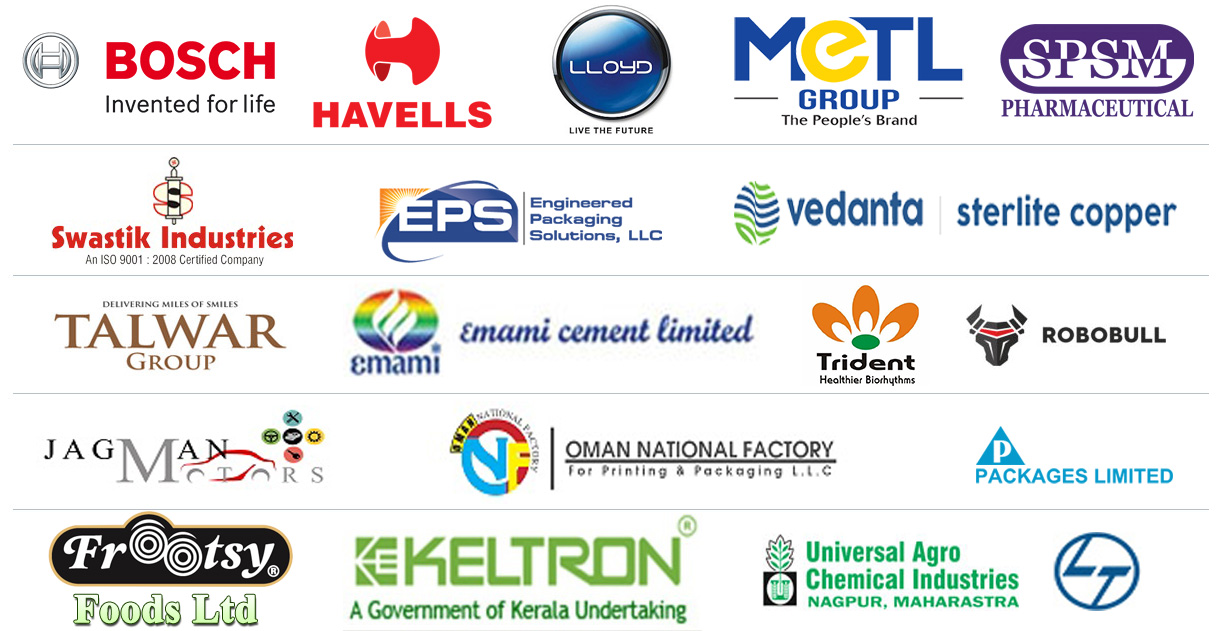
Our Approach
- Our research reports comprehensively cover Indian markets (can be modified as per your country), present investigation, standpoint and gauge for a time of five years*.
- The market conjectures are produced on the premise of optional research and are cross-accepted through associations with the business players
- We use dependable wellsprings of data and databases. What's more, data from such sources is handled by us and incorporated into the report
Why buy EIRI reports?
- Our project reports include detailed analysis that help to get industry Present Market Position and Expected Future Demand.
- Offer real analysis driving variables for the business and most recent business sector patterns in the business
- This report comprehends the present status of the business by clarifying a complete SWOT examination and investigation of the interest supply circumstance
- Report gives investigation and top to bottom money related correlation of real players/competitors
- The report gives gauges of key parameters which foresees the business execution























